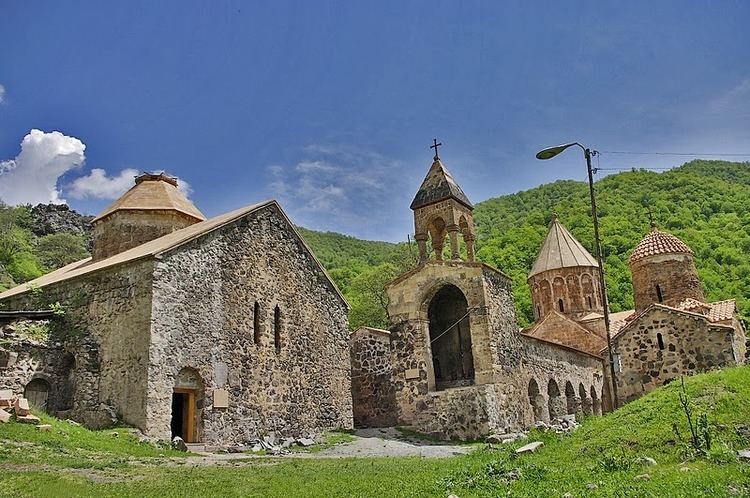Completed 9th–13th centuries | ||
 | ||
Location Shahumian Region, Nagorno-Karabakh Republic (de facto); Kalbajar District, Azerbaijan (de jure) Similar | ||
Karabakh armenia dadivank sorik
Dadivank (Armenian: Դադիվանք) also Khutavank (Armenian: Խութավանք – Arm. Monastery on the Hill) is an Armenian monastery in the Shahumian Region of the Nagorno-Karabakh Republic, de jure Kalbajar District in Azerbaijan. It was built between the 9th and 13th century.
Contents
- Karabakh armenia dadivank sorik
- Nagorno karabach dadivank monastery
- History and architecture
- Books
- References
Nagorno karabach dadivank monastery
History and architecture
The monastery was founded by St. Dadi, a disciple of Thaddeus the Apostle who spread Christianity in Eastern Armenia during the first century AD. However, The monastery was first mentioned in the 9th century. In June, 2007, the grave of St. Dadi was discovered under the holy altar of the main church. The princes of Upper Khachen are also buried at Dadivank, under the church's gavit.
The Monastery belongs to the Artsakh Diocese of the Armenian Apostolic Church, and consists of the Cathedral church of St. Astvadzadzin, the chapel and a few other buildings. The main church has Armenian script engraved into its walls, in addition to several 13th century frescoes. The bas-relief on the south facade of the cathedral at Dadivank, built in 1214, shows the princess offering the church in memory of her sons. According to Paolo Cuneo, Dadivank is one of two Monasteries along with Gandzasar where bust motifs (possiblly the donors of the monasteries) can be found.
On 8 October 2001, Document No 9256 on the maintenance of historical and cultural heritage in the Nagorno-Karabakh Republic was signed by 16 members of the Parliamentary Assembly of the Council of Europe from Armenia, Cyprus, Italy, Romania, Greece and Russia In which they stated that one of Azerbaijan's policies in Nagorno-Karabakh was the destruction of Dadivank, which "the local Muslim population regarded as remnants of the Armenian Christian religion and ruined the monastery as it could". In 1994 the monastery was reopened and the reconstruction process began in 2004 with funding from Armenian-American businesswoman Edele Hovnanian, ending in 2005. The restoration efforts restored the Cathedral, along with a chapel which was restored by Edik Abrahamian, an Armenian from Tehran, Iran.
